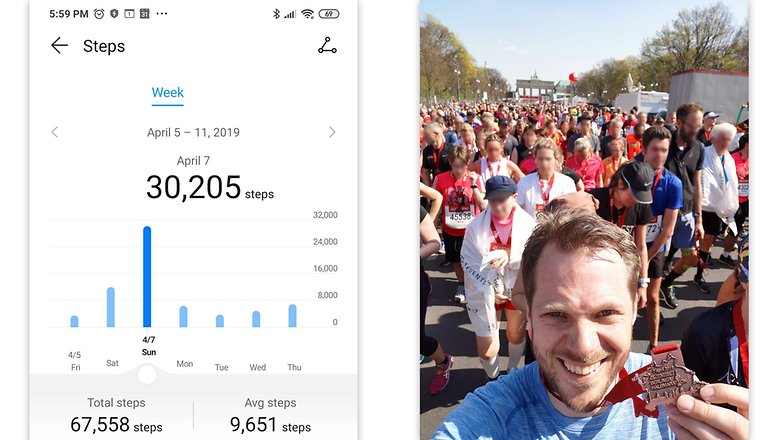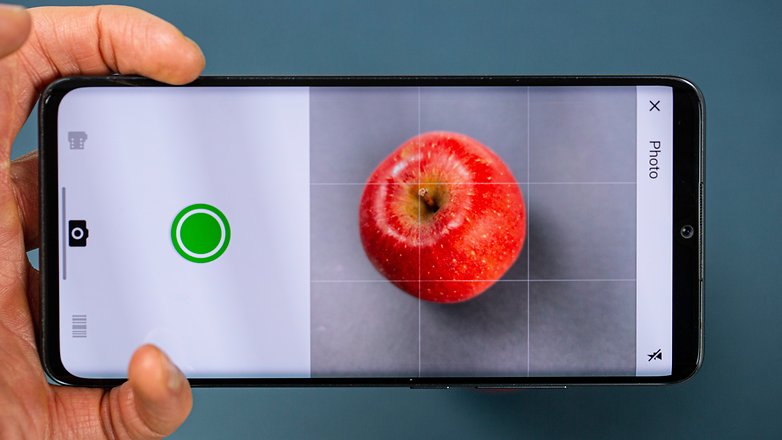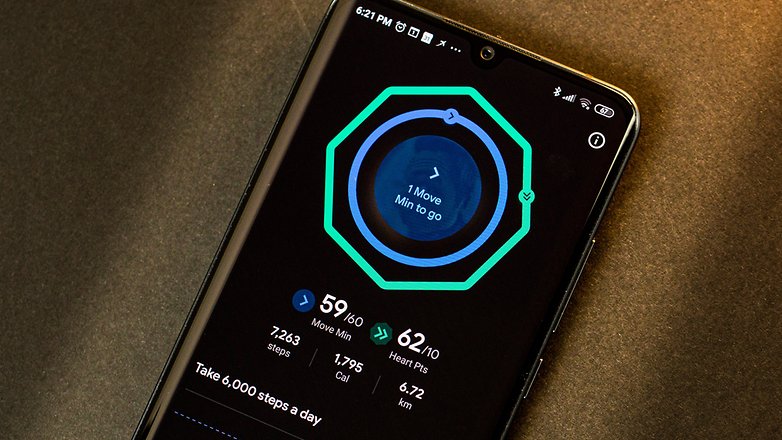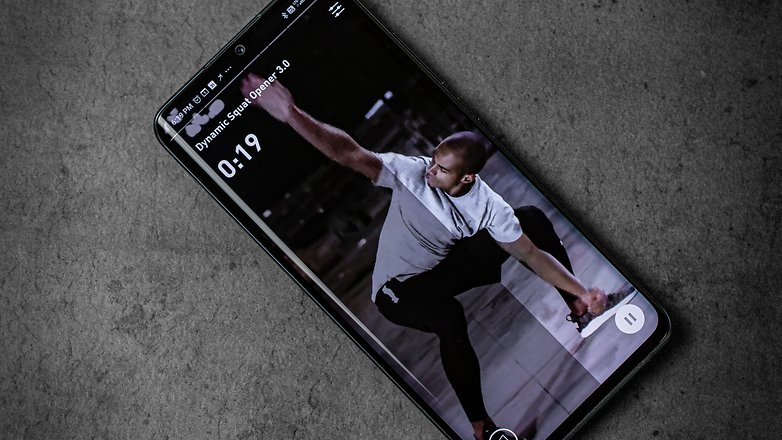I was always a little overweight until about 2012. My maximum was about 95 kilograms on 184 cm of height - and no, the reason for the extra weight was no shot-put muscle mountains, but soft fat on all corners and ends. It may be a little bit away from morbid obesity, but I didn't feel well. Not in the swimming pool and also not when climbing a few flights of stairs had me blowing for air.
In the meantime it is 2020 and I am a whole lot lighter at around 80 kilograms, and above all: I feel fit. I ran the Berlin half marathon last year without any extra training worth mentioning, I can do a dozen pull-ups depending on my level of training and - much more important - I just feel really good in my body.

But honestly, it was a long journey full of trial and error and with three severe injuries including two operations. Perhaps this article can shorten your time of confusion and pain. I've had the fortune to be able to test an extremely large number of fitness gadgets for many years. I was smirked at for having several fitness trackers for each wrist, tried out a variety of sports programs from yoga to Plyometrics to pumping iron, strapped on heart rate monitors, put pulse measurement devices into my ear canals and stood on four different body fat scales one after the other in the morning. I even had the opportunity to study for a fitness trainer B-license in Germany, even though I still haven't passed the final exam.
I would like to give you a rough idea of how you can define and achieve your fitness goals based on my experience - and how all the technical stuff will help you achieve them. There are hundreds of books about each section, and here is only the space to touch on all aspects, so I want to show you my learnings in a holistic way, viewed through the tech-eyes of course.
Evolution is an asshole
You read it right: evolution is to blame for the fact that we can't just lie around on the sofa all day and shovel chips into our mouths, because the body is a machine perfected by evolution. Only surpassed by successful reproduction is survival our secondary goal, and besides saber-toothed tigers and Co., food shortage was the greatest danger for thousands of years.
Therefore any excess energy is meticulously stored as fat for times of crisis. Every person, due to their genetic heritage, has different dispositions as to how much and where in the body fat is stored. Your ancestors had to fight hard for survival? Bad for you, because then your body is probably more effective at hoarding plump.

The inhabitants of the island state of Nauru, for example, have had to endure bitter famines for centuries - those people or genes that are particularly effective in energy management have survived. The westernization of the diet and the temporary gigantic wealth based on bird droppings has now given Nauru the highest diabetes rate in the world at 33 percent.
Your body weight: intake and consumption
Regardless of your genetic makeup, the basic idea of weight loss and gain is simple: if you eat more than you burn, then you gain weight - and vice versa. Yeah, there are countless trends like "no carbohydrates after 6 p.m.", interval fasting, low-carb high-fat diets, or some of Gwyneth Paltrow's crazy stuff, some of which is just useless at best, while other measures actually push your metabolism in a different direction in the long term or help you develop generally healthier eating habits.
But in my experience, the leverage is much greater if you consider your body as a closed physical system, and there the input-output principle applies, the very first step is to get to know your calorie intake and your consumption.
Input: counting calories is really annoying
Yes, writing down all meals and drinks competes in popularity with sorting screws. But it is immensely helpful. In addition, there are numerous apps that simplify the task enormously. For example, instead of typing in calories from your sandwich, you can simply scan the barcode on the packaging with FatSecret and have your lunch written down. And, if you keep the nutrition tracking up for a few weeks, you will quickly develop a very good feeling for your own nutrition - and at the same time learn to listen to your body.

Besides the pure energy supply in kilocalories, most apps also record the macronutrients that make up the supplied energy. The macronutrients are fat, protein and carbohydrates, sometimes called carbs. Bad news for those booze hogs out there: by the way, alcohol also belongs to the macronutrients and has a lot of calories. Two glasses of absinthe are about the same as one glass of olive oil. Yummy.
Macronutrients in comparison
|
|
Protein | Fat | Alcohol |
|---|---|---|---|
| 4 kcal/g | 4 kcal/g | 9 kcal/g | 7 kcal/g |
Whether low carb or high carb: there are countless philosophies as to how the supplied energy should ideally be composed of the macronutrients. Although the composition has no or only a secondary influence on weight gain or loss, depending on the source of information, it still plays a role for the body. I, for example, feel constantly tired with low-carb diets because my body lacks the readily available energy supplier in the form of carbohydrates. And with the wrong meals at the wrong time, you simply tend to eat too much.
I have always driven best with a macronutrient ratio between 60:20:20 and 80:10:10, in each case related to carbohydrates to proteins to fats as proportional energy sources. If you track your diet for a while, you can see the distribution of macronutrients in the apps and learn for yourself what works best for you.
Apps for calorie counting: two examples
| App | Brief description | Link |
|---|---|---|
| FatSecret | Clear app with a large database. Not only scans barcodes, but also searches photos for food and adds it to your daily schedule. Unfortunately, without registration nothing works. Those who take out a Premium Membership (from 3.48 euros per month) will also find detailed nutritional plans in the app and can set long-term goals. | Google Play |
| FDDB Extender | The Food Database is one of the most comprehensive databases for food, nutrients, etc. - and with the FDDB Extender it comes as an app on your smartphone. The range of functions is very similar to Fatsecret - and you need an account here too. A few additional functions such as targets for macronutrients cost 1.67 euros per month. Optionally, the app can also be connected to Google Fit, Samsung Health, Fitbit or Garmin Connect. | Google Play |
Apart from macronutrients, there is still a lot to consider in terms of nutrition. 'Fast carbohydrates' are (usually) worse than 'slow carbs' (glycemic index), there are good and bad fats (saturated/unsaturated), and there are also enormous differences in protein (valence). Oatmeal (slow carbs), for example, fills you up much longer than white toast (fast carbs), which makes it easier to eat less. There is a lot of literature on this subject, and I am sure you will quickly find what you are looking for at your local bookstore or in relevant forums.
Consumption: How much energy do you burn?
After you have determined the input, it goes to the output. To calculate your energy consumption now, there are simple rules of thumb and calculators. This so-called basal metabolic rate quantifies how much energy you use in everyday life when you oxidize - without long-distance runs or without being at the MWC and taking 20,000 steps a day.
In order to calculate as precisely as possible any activity on the basal metabolic rate, various fitness wearables help. A smartwatch with a heart rate sensor, for example, can use your heart rate to estimate quite precisely how much energy was actually burned by standing around the counter in the gym without motivation. All daily activities plus the basal metabolic rate finally result in the calorie requirement of your body.
Fitness Trackers: two examples
| Device | Brief description | Price/Link |
|---|---|---|
| Honor Band 5 | The Honor Band 5 is unbeatably cheap. For just $40, it records sleep, heart rate or even the oxygen saturation in the blood. At one week, the battery life is excellent. As a smartphone app, Huawei Health makes a good impression - here you can find beautifully prepared data and even a few successful training plans. | Approx. $40 |
| Garmin Venu | A large color display, integrated GPS and the possibility of linking cadence sensors for the bike, heart rate belts for the chest and many other gadgets to the watch: the Garmin Venu (and most of the current Garmin watches) are really great for ambitious athletes. The app is well done and there are comprehensive training plans. | Approx. $350 |
Sport versus input and consumption
If you now know the input and consumption, you should be able to accurately predict any weight gain or loss. Record your weight for a few weeks - either with analog scales or, more conveniently of course, with smart scales including a smartphone app. If there are inconsistencies, you will have to adjust your basal metabolic rate, which is calculated by rule of thumb. Or you can finally stop sneaking all those candy bars past the calorie counter.
If you now add or subtract weight, there is also another variable: how much sport do you do - and how is your body stressed? For example, if you are running a significant calorie deficit and do not exercise at all, your body will panic and prepare for a famine. In the course of this, everything unnecessary is tipped overboard, which costs energy; in other words: a lot of muscle as well. Yes, muscles need a lot of energy and, if they are not used, they are evolutionarily seen as a superfluous luxury. Instead, the body prefers to create energy reserves in the form of fat.

If you then eat again as before after a sports-free crash diet, the body, which has been relieved of a lot of muscle, has a lower basal metabolic rate than before. With your usual energy intake and still without exercise, you will gain weight again by leaps and bounds - and primarily fat, after all, the next famine could be just around the corner. This harmful swinging of the weight is known as the yoyo effect.
If, on the other hand, you do a lot of exercise when you are calorie deficient, your body will consider your muscles important for survival - and will tend to make more use of your fat reserves for energy supply. Likewise, if you have excess calories plus exercise, you will build up more muscle than fat. In traditional bodybuilding, many athletes therefore alternate between so-called "bulk" and "cut" phases, in which surplus muscles are first built up and then the fat added in the course of this process is trained out again in the calorie deficit.
Body fat scales: two examples
| Device | Brief description | Price/Link |
|---|---|---|
| Withings Body+ | The Withings Body+ connects to the home Wi-Fi. To record your values for body fat, muscle mass, bone mask, water content, etc., all you have to do is stand on the scales - the rest is done automatically. Afterward you will find the data prepared in the app. Most body fat scales offer a similar range of functions. | Approx. $80 |
|
Tanita BC-545F |
More sophisticated body fat monitors such as the Tanita BC-545F also offer the option of measuring the tissue composition of the upper body thanks to a removable handpiece - this allows more accurate information about actual body fat percentage, muscle mass, etc. | Approx. $250 |
What do you want? What's fun?
The important thing for you now is: find one or better several sports that put an even and complete strain on your body. For the cardiovascular system, anything that keeps your pulse rate up in the long term is great, that is: swimming, jogging, cycling have a positive effect on your blood pressure and resting pulse. At the same time, these sports also consume a lot of calories per time and thus push your calorie balance in a negative direction.

For muscle building, on the other hand, you can either work out at home or at the gym. Take care to put a balanced load on your body - especially do not neglect your back. And please do me this favor: if you start exercising after a long period of abstinence, have yourself observed at least a few times to ensure that the exercises are performed correctly. This can be done by a trainer in the gym or by friends who are sports enthusiasts. Because with the wrong execution of exercises you can break a lot.
Training apps: two examples
| App | Brief description | Link |
|---|---|---|
| Freeletics | Freeletics is probably THE app when it comes to independent fitness training. Here you get countless training plans and workouts, which explain each exercise with successful videos. But the best thing about Freeletics is the community that meets in many places around the globe for training together. Those who pay have access to the full training program - and an online coach at their side. | Google Play |
| Adidas Training by Runtastic | Formerly known as Runtastic Results, Adidas Training aims to get you in shape with a twelve-week plan. The clearly structured calendar helps you to get into a training rhythm and hopefully not to give up your good intentions after only one week. As with Freeletics, there is also a paid version available for around 10 euros per month, which activates additional functions. | Google Play |
Whatever you do, the most important aspect of sport remains: find something that you enjoy. Something you'll want to do regularly. It usually takes one to two months to internalize a new training routine. You just have to hang on that long and it'll take care of itself.
Now it's your turn!
Now if you have fought your way to the end of this article, one thing should be clear: you do not need apps or gadgets to lose weight. But they make the individual aspects of a healthier lifestyle easier. And as much as one may be critical of the whole "Quantified Self" movement, a key to my healthier lifestyle was also the ability to track my personal development over the months or years. And even if analog training plans with years of training are piled up in my living room, it's easier and clearer to use the app.
Read More Open link https://ift.tt/372bfzu
0 Response to "Here's how to really fit this year with apps and gadgets!"
Posting Komentar